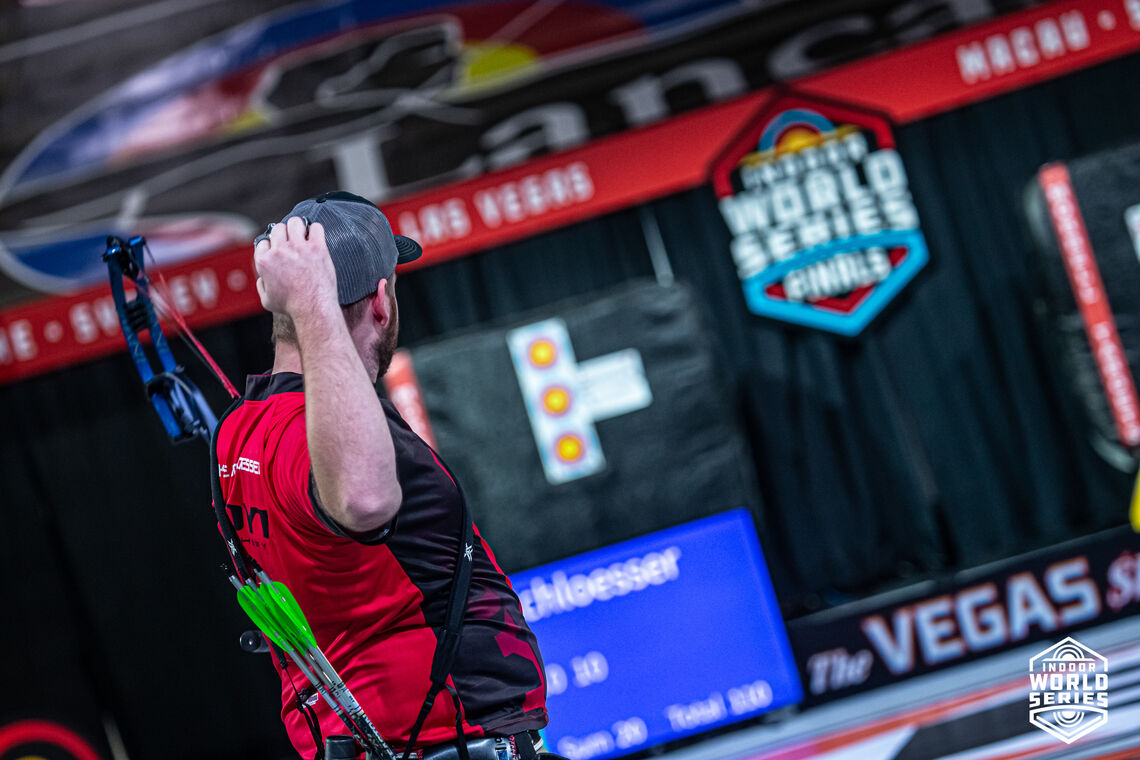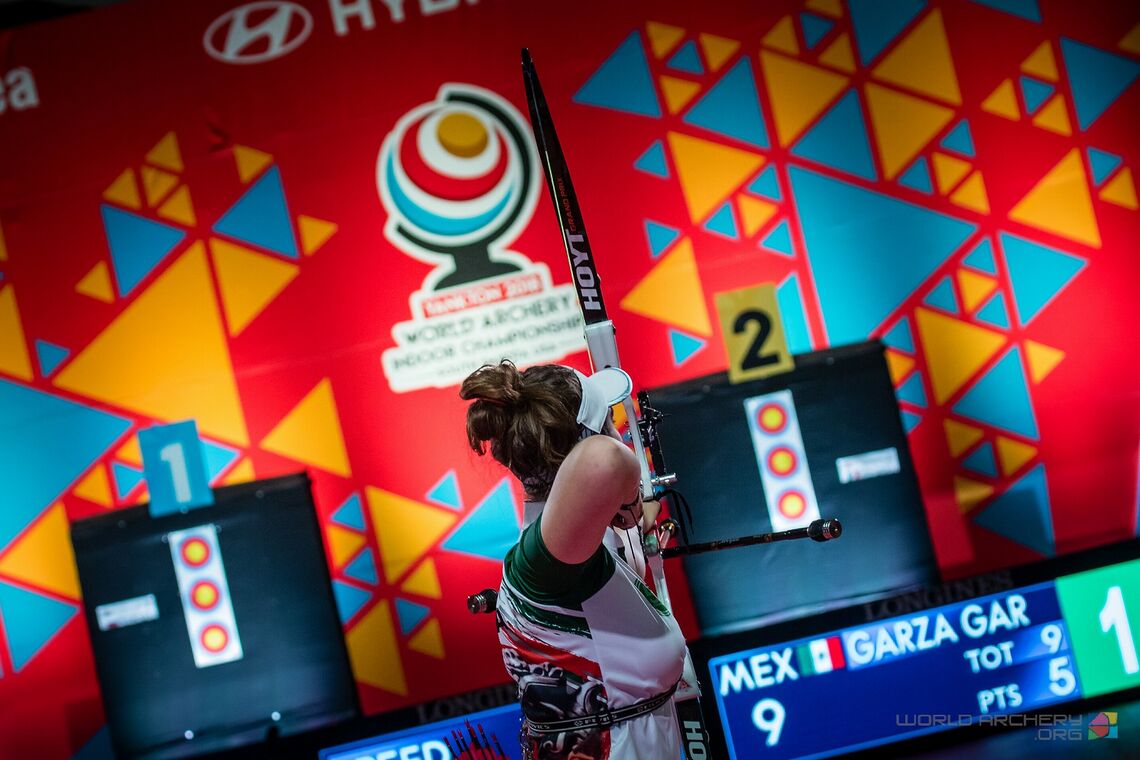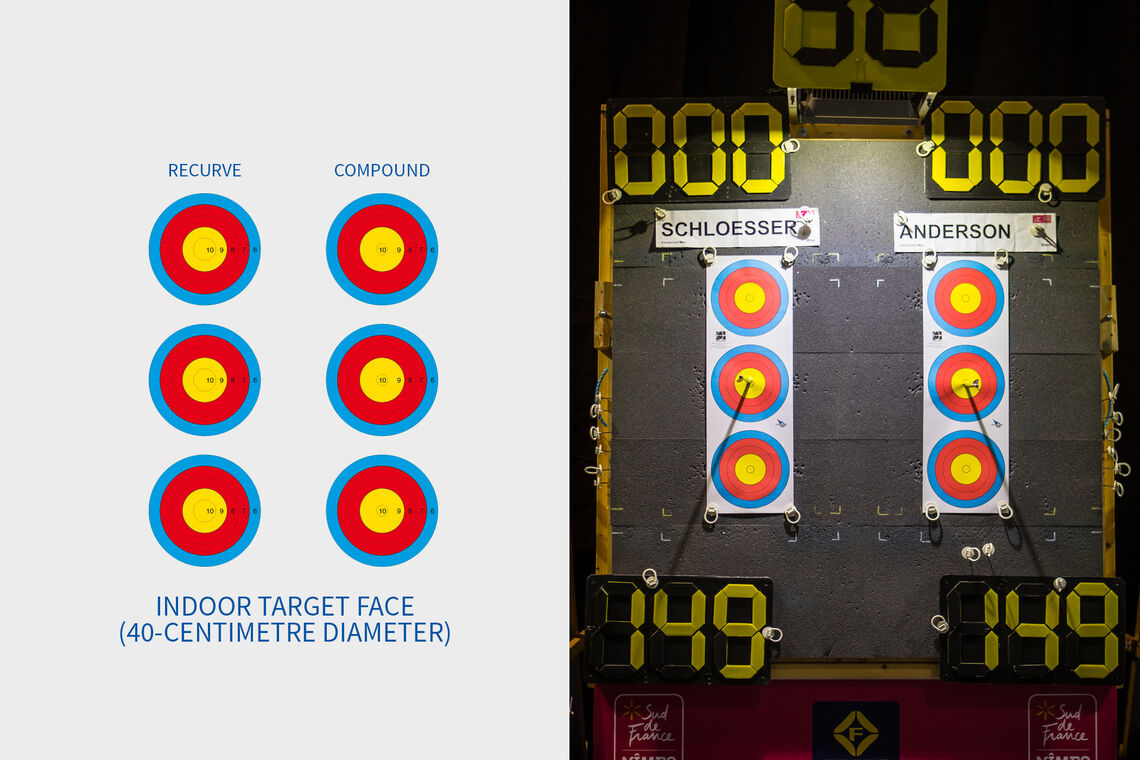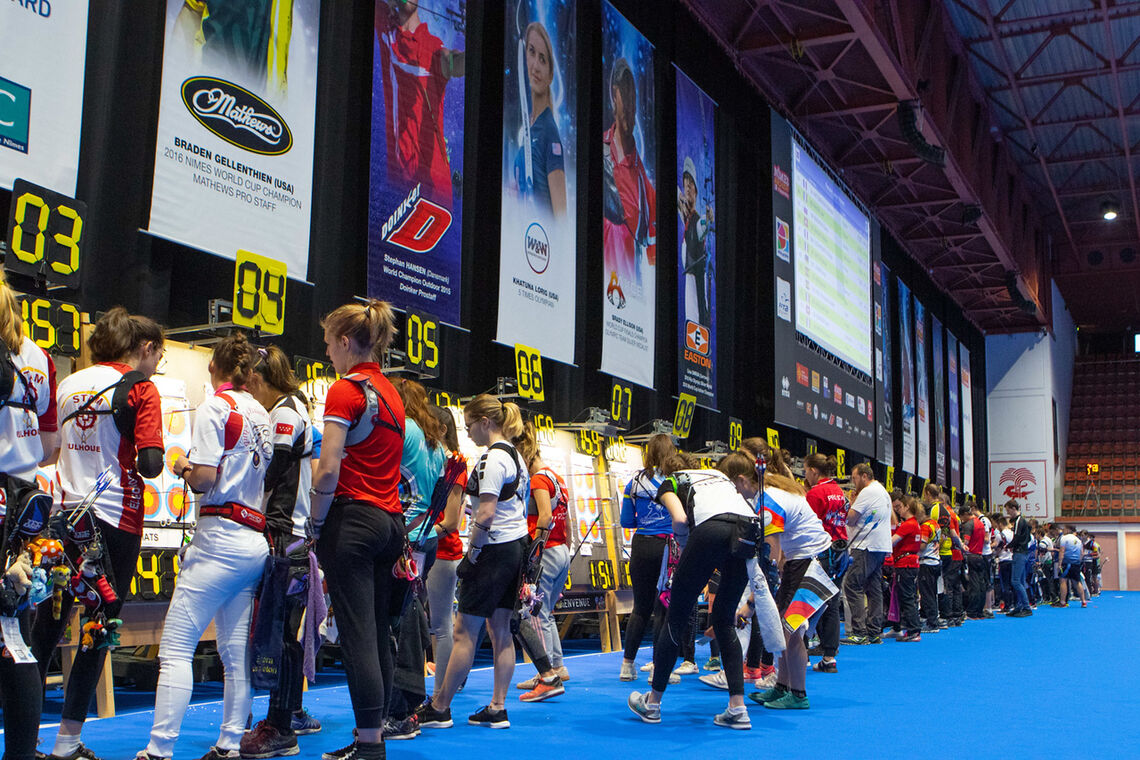
Indoor archery
A variation of target archery practised at short distances.
Indoor archery is the discipline of shooting at stationary circular targets over a short distance inside a building. It is a variation of target archery.
Recurve, compound and barebow archers usually shoot over a distance of 18 metres at three smaller versions of the traditional archery target arranged in a vertical line.
World Archery organised 14 editions of the indoor archery world championships, which was called the World Archery Indoor Championships, from 1991 to 2018. It was removed from the calendar in favour of the Indoor Archery World Series, which is the sport’s annual mass-participation competition circuit, open to all archers.

Targets
International target archery competitions feature archers using recurve and compound bows.
Archers in both competition categories shoot over a distance of 18 metres at smaller versions of the traditional five-colour target face with 10 concentric scoring rings, measuring 40 centimetres in diameter. However, the outer five rings are usually removed and each target consists of three separate spots so that the archer avoids damaging their arrows.
Recurve archers shoot at a target face measuring 40 centimetres in diameter with a 10-ring measuring 4 centimetres in diameter.
Compound archers shoot at a target face with identical proportions to the recurve face, except the 10-ring is halved in size, measuring 2 centimetres in diameter.
There are also international rules for archers using barebows.
Barebow archers shoot at a full-size, single-spot target face with all 10 concentric scoring rings, measuring 40 centimetres in diameter and a 10-ring measuring 4 centimetres in diameter.

Competition format
International indoor archery competitions consist of the individual event.
There are two distinct phases to a competition.
The qualification phase consists of each archer shooting 60 arrows. Archers are ranked by their total score. These rankings provide the seedings for the brackets. The maximum number of archers who can advance is usually cut at 32.
The matchplay phase consists of archers, mixed teams and teams progressing through head-to-head brackets, one for each category, in which the winner of each match advances and the loser is eliminated until a champion is crowned. Recurve matches are decided using the set system, while compound matches are decided on cumulative score.
There are also international rules for the team event. A team consists of three archers of the same gender shooting with the same bowstyle. Seeds for the team event are decided by ranking the highest scoring three archers of the same gender from one country. The number of mixed teams or teams that can advance is usually cut at 16.
Match formats
Recurve matches are decided using the set system, which rewards archers who shoot the points required to beat their opponent at the critical moments in the match.
The goal of a set system match is to accrue a certain number of set points. The target number of set points is six in an individual match. A set consists of three arrows. An archer earns two set points for winning a set and one set point if the set is drawn. If it’s tied on five set points after five sets, then the match is sent to a tiebreak.
The target number of set points is five in a team match. A set consists of six arrows. If it’s tied on four set points after four sets, then the match is sent to a tiebreak.
Compound matches are decided using cumulative score, which rewards ultimate precision and consistency under extreme pressure.
The goal of a cumulative score match is to finish the match with the highest total score. A match consists of a defined number of arrows, which is 15 for an individual match and 24 for a team match. (The arrows are split equally between archers in team matches.)
If a match is tied on total score after the regulation number of arrows, the match is then sent to a tiebreak.
Barebow matches are decided using the set system.
Tiebreak formats
The tiebreak procedures for all competition categories are the same.
In an individual match, each archer shoots one arrow on the central spot of the target face. The archer whose arrow lands closest to the centre of the target wins the match.
(If the judge cannot decide whose arrow is closest, they may call for another shoot-off.)
In a team match, each archer shoots one arrow. The mixed team or team with the highest total score wins the match.
If the teams are tied on score, then the team whose arrow landed closest to the centre of the target wins the match. If those arrows are an identical distance from the centre, then the next arrows are compared (and again for teams).
(If the judge cannot differentiate between the mixed teams or teams after the last arrow, they may call for another shoot-off.)

History and other formats
The first indoor archery world championships were held in Oulu, Finland, in 1991. It was the first international target archery event to include the compound bow. (The category had been included on the programme of the World Archery Field Championships in 1990 and was then added to the World Archery Championships in 1995.) Fourteen editions of the World Archery Indoor Championships were held until the last took place in Yankton, USA, in 2018.
Launched in 2010 as the Indoor Archery World Cup and rebranded in 2019, the Indoor Archery World Series is the highest level of indoor archery competition and a mass-participation circuit of events held in destination cities around the world.
Several alternative competition formats are included in the World Archery Rulebook, including rounds shot at a distance of 25 metres, and there are many local variations.







